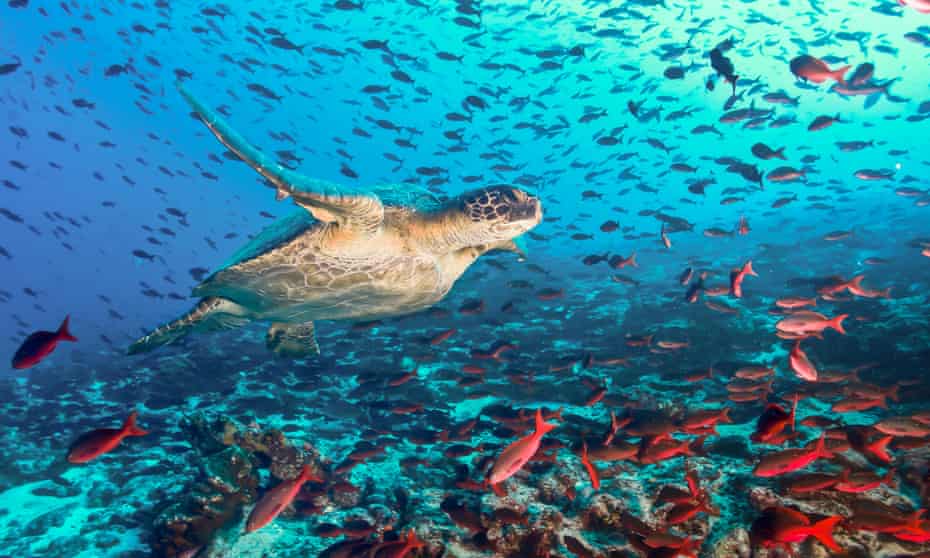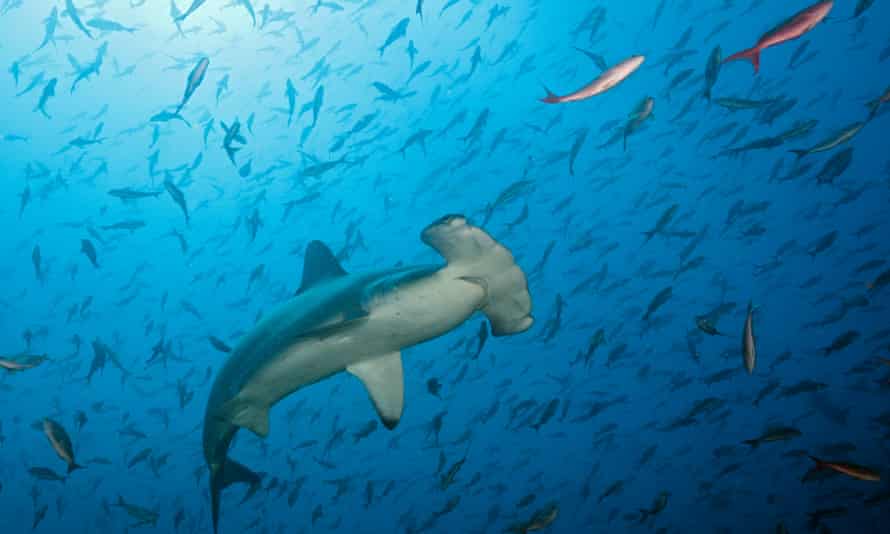Latin American countries join reserves to create vast marine protected area
‘Mega-MPA’ in Pacific will link waters of Ecuador, Colombia, Panama and Costa Rica to protect migratory turtles, whales and sharks from fishing fleets

Four Pacific-facing Latin American nations have committed to joining their marine reserves to form one interconnected area, creating one of the world’s richest pockets of ocean biodiversity.
Panama, Ecuador, Colombia and Costa Rica announced on Tuesday the creation of the Eastern Tropical Pacific Marine Corridor (CMAR) initiative, which would both join and increase the size of their protected territorial waters to create a fishing-free corridor covering more than 500,000 sq km (200,000 sq miles) in one of the world’s most important migratory routes for sea turtles, whales, sharks and rays.
The move comes amid growing clamour for action to protect rare marine species and commercial fish populations against foreign fishing fleets exploiting the region’s rich marine biodiversity, as well as to limit illegal, under-reported and unregulated (IUU) fishing by local fishing communities.
The president of Colombia, Ivan Duque, announced an additional 160,000 sq km of marine protected area on top of the country’s existing 120,000 sq km at Cop26 in Glasgow on Tuesday.
The day before, Ecuador’s president, Guillermo Lasso, took the first step by announcing the expansion of the current 133,000 sq km Galapagos marine reserve by 60,000 sq km.
“Just as all the world leaders here have called for action not words, I believe this is a concrete action on behalf of Ecuador that goes beyond any words we can say here,” Lasso told the Guardian after the announcement.
“This is a sovereign decision of the Ecuadorian government but I have to point out that it is the result of five months of dialogue, which we’ve held with small-scale and industrial fishermen. For that reason I don’t expect any problem of rejection or protest because it is a consensual decision,” he said.
Lasso added that the plan for a wider joined-up reserve was “an absolutely direct response of middle-income countries with a commitment to humanity” to the increased presence of industrial fishing fleets. He said the expansion involved one of the world’s largest debt swaps for conservation, but did not give any details or figures.
The expansion creates a “safe swimway” connecting Ecuadorian with Costa Rican waters, where “important endangered migratory species, such as sharks, whales, turtles and manta rays travel”, said Ecuador’s environment minister, Gustavo Manrique.
“In spite of the fact we’re a developing country, despite the fact we have [one of] the largest [fishing] fleets in the Pacific, we have decided to reduce the fishing effort,” Manrique told the Guardian.

“This is the new language of global conservation. Never have countries with connecting maritime borders joined together to create a public policy.”
This new Galapagos protected area would be split into two: a no-take zone of 30,000 sq km to the north-east of the Galapagos Islands connecting Ecuador’s waters with those of Costa Rica, along the underwater seamounts of the Cocos Ridge, a key migration route for ocean-going species. Another 30,000 sq km area is a no-longline fishing zone wrapping north-west around the existing Galapagos marine reserve.
Alex Hearn, a British marine biologist who has worked in the Galapagos Islands for two decades, said it was a step forward. “This is a moment to relish, but there’s a lot of work which needs to be done.”
Hearn said the eastern tropical Pacific was “one of the last bastions of what ocean biodiversity would look like in a pristine world”, and described the seas that connect the Galapagos, Malpelo, Cocos and Coiba islands as a living laboratory for scientific research.
“Just protecting the waters around them is not enough. There’s a connectivity between the areas and that’s what we need to protect,” he said.
Hearn noted that the populations of highly migratory species had been falling this century, among them turtles, rays and sharks, particularly the critically endangered hammerhead species that congregates to breed around the Galapagos’s Darwin and Colombia’s Malpelo islands.
In June, as part of the UK-led “30×30” initiative to secure at least 30% of the world’s ocean as protected marine areas by 2030, Panama more than quadrupled the Cordillera de Coiba marine protected area – from about 17,220 sq km to 98,230 sq km.
Max Bello, an ocean policy advisor with the NGO Mission Blue, said: “With this commitment, Latin America again consolidates its leadership in marine conservation, but more is needed. We are hoping to continue towards at least 30% of protection in all of the [maritime] countries.”
“A new era – to provide protection to species which know no frontiers – has been born,” he said.

